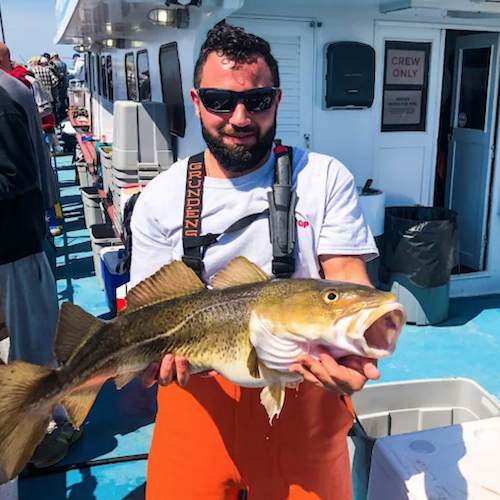
Nick Calabrese
As a member of My Fishing Cape Cod (@ncalabrese) and a life-long recreational fishermen it was a great privilege to present some of my research in Fisheries Science at the Cod and Coffee event back in March. When Ryan asked if I would like to write an article with a more detailed look at our work, I jumped at the opportunity.
My name is Nick Calabrese, and I am a Research Associate and PhD Candidate at the School for Marine Science and Technology (SMAST). SMAST is a graduate school at UMASS Dartmouth located at a satellite facility in New Bedford. I work in Dr. Kevin Stokesbury’s Marine Fisheries Field Research Group (MFFRG).
We collaborate with members of the fishing industry as well as the state and federal governments on several fisheries research projects including; ventless trap lobster surveys in wind farm lease areas, drop camera surveys of scallop populations, maturity studies on whelks, and my project - the video trawl survey of Gulf of Maine cod.


We just completed our third video trawl survey of cod in the western Gulf of Maine this May. For the past three years we’ve tracked a large year class from 2019 that has continued to show healthy growth without major mortality.
The young of the year in 2019 were seen in multiple surveys capable of catching fish that small (they escape our net through the meshes). In 2020 we saw some areas with high densities of fish that were approximately the size we would expect if they had been young of the year in 2019.
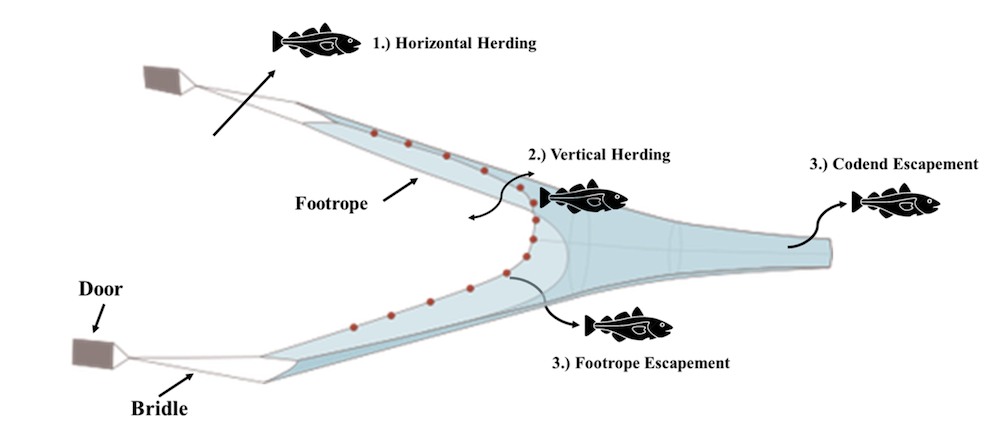
A diagram of the trawl we use when video surveying cod. Note how the cod are allowed to escape unharmed through the codend escapement. You can see video footage of this trawl in action below.
We then saw these fish again in 2021 and 2022 growing as you would hope. Our analysis for 2022 shows a slight decrease in biomass, with some new signs of recruitment and a few larger fish.
What the future holds for this year class and this stock we don’t know yet, but it is very exciting to have some good news for a stock that so desperately needs it.
I grew up fishing for cod on the various headboats along the North Shore and New Hampshire. Like many of you, I saw the recreational limits decline to zero and experienced the loss of a fishery I loved. The state of this stock has been a point of contention between the fishing industry, fisheries scientists, and managers.
The Video Trawl Survey Explained
For years now the fishing industry has observed high catch rates of cod in the Gulf of Maine that have not been reflected in the Northeast Fisheries Science Center (NEFSC) survey abundance index. The opportunity to use our technology to survey the Gulf of Maine cod stock arose in 2016, and we began small scale surveys during the winter.
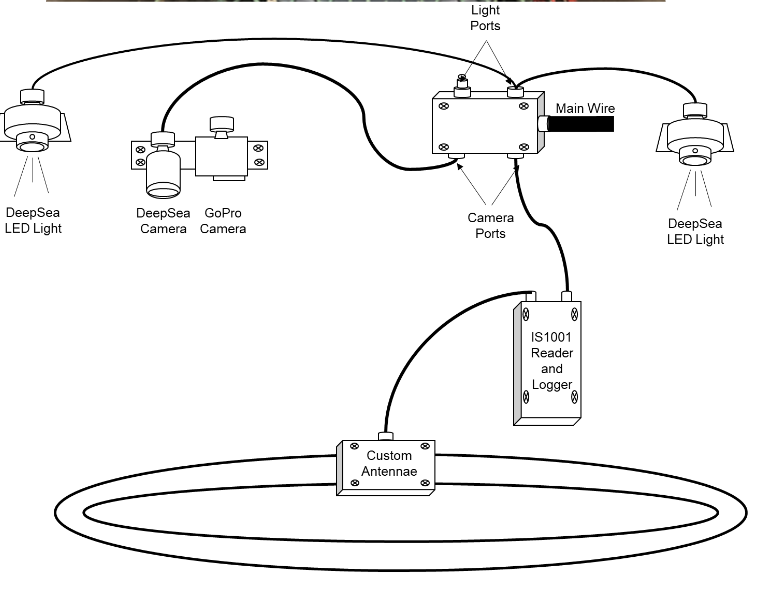
A detailed look at our video trawl setup.
We have had the privilege of working closely with a group of commercial fishermen to design our video trawl survey. The survey uses a commercial trawl net fished from the FV Justice (New Bedford, MA).
Using video cameras to count fish means the codend of the net can be left open, and the fish can pass through unharmed. This allows us to tow for hours, covering more ground than a traditional trawl survey and increasing the sample size dramatically. We hoped that this would enable us to collect much more information on the state of the Gulf of Maine cod stock, without unnecessarily killing more fish.
The video trawl survey uses a circular plastic tub, with bottom removed, sewn inside of the codend of the net. Three cameras and two lights are placed and angled towards the codend, and a custom-made automatic winch holds our main wire which brings power to the lights and cameras as well as providing a live video feed to the wheelhouse.
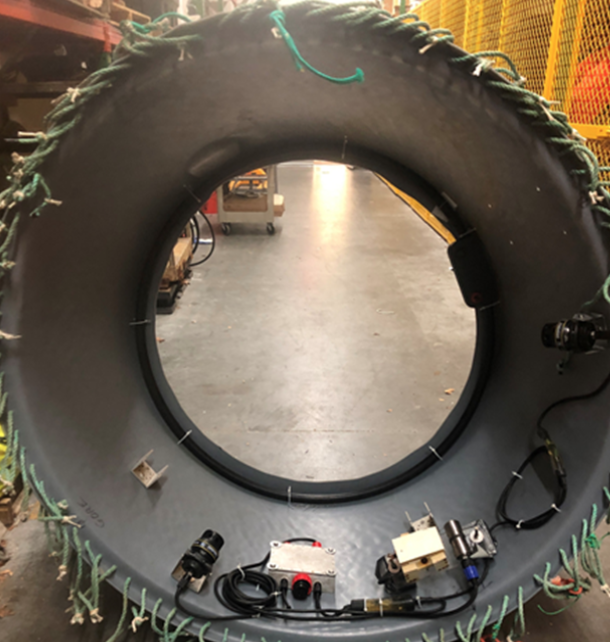
A GoPro is used for high resolution wide-angle video to count all the fish passing through and a stereoscopic camera is used to measure a subsample of the fish.
Once the video is collected, it is uploaded to a website, where technicians can review the video to count and measure the cod.
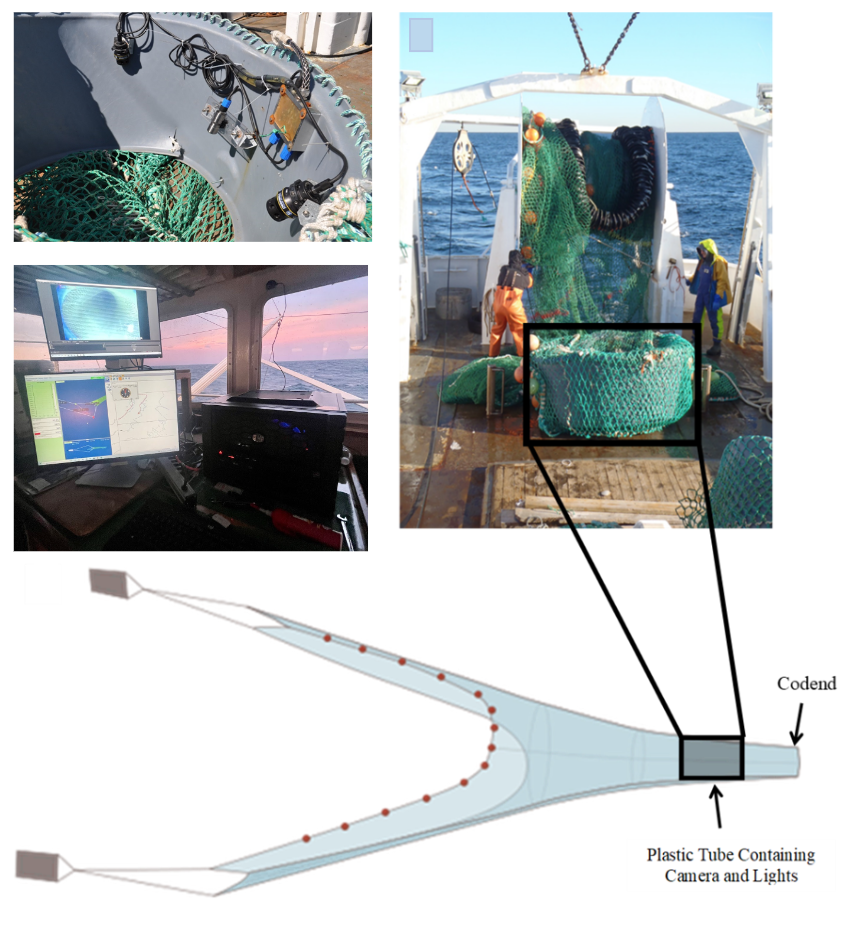
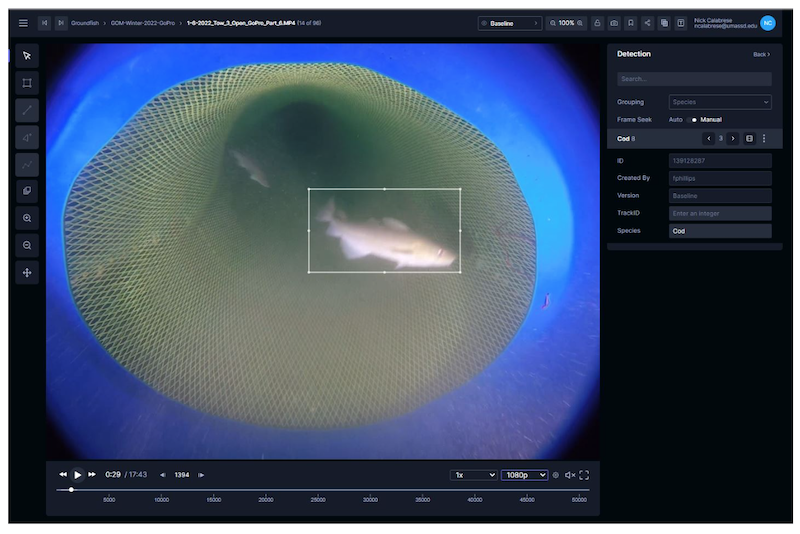
Video Survey Results & Future Plans
Starting in 2016 we began semi-annual week-long surveys of Stellwagen Bank and Jeffrey’s Ledge in both the winter and spring, with the goal of proving our technology can effectively survey cod, and producing biomass estimates for these important areas. During these surveys on Stellwagen we saw how densely populated the bank can get with various species of baitfish.
In 2016 and 2017 we saw large numbers of cod aggregated on Stellwagen bank, but our catches declined rapidly after that. Despite the importance of Stellwagen and Jeffrey’s to the cod stock, surveying such a small area caused our catches to fluctuate as a result of fish movement on and off the bank rather than with the status of the stock. However, these surveys were critical to proving the effectiveness of our methods.
In 2018, my masters thesis showed that we could accurately count cod in the video when compared to the catch of closed codend tows - which provided the proof that our counts from the video were accurate.
We then expanded our survey area to a much larger (20x) portion of the Western Gulf of Maine in 2020. This area represented an average of 69% and 74% of commercial landings and Northeast Fisheries Science Center (NEFSC) survey catch over the past ten years respectively. It was also the maximum coverage of the stock we could get with our current resources.
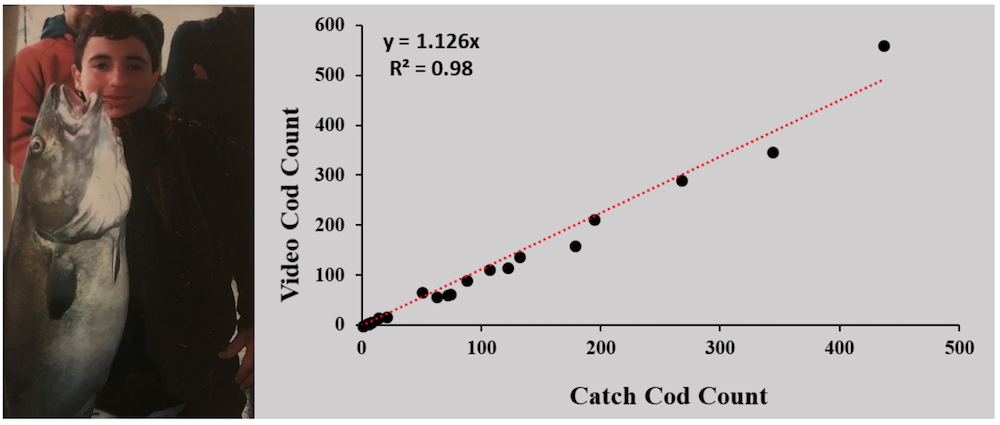
Our next goal for this project is to get the data used in the stock assessment of Gulf of Maine cod, but first there are a few obstacles we need to overcome. These obstacles are the basis for my PhD work. Before I can effectively explain what our most recent projects have been, I need to give a quick background on the assessment of Gulf of Maine cod.
How The Cod Stock Assessment Is Developed
A stock assessment uses all the available data sources to describe the state of the stock. These data sources include MRIP for recreational catch, vessel and dealer reports for commercial catch, observer data for discards, and fisheries independent surveys which collect biological data and provide an index of abundance.
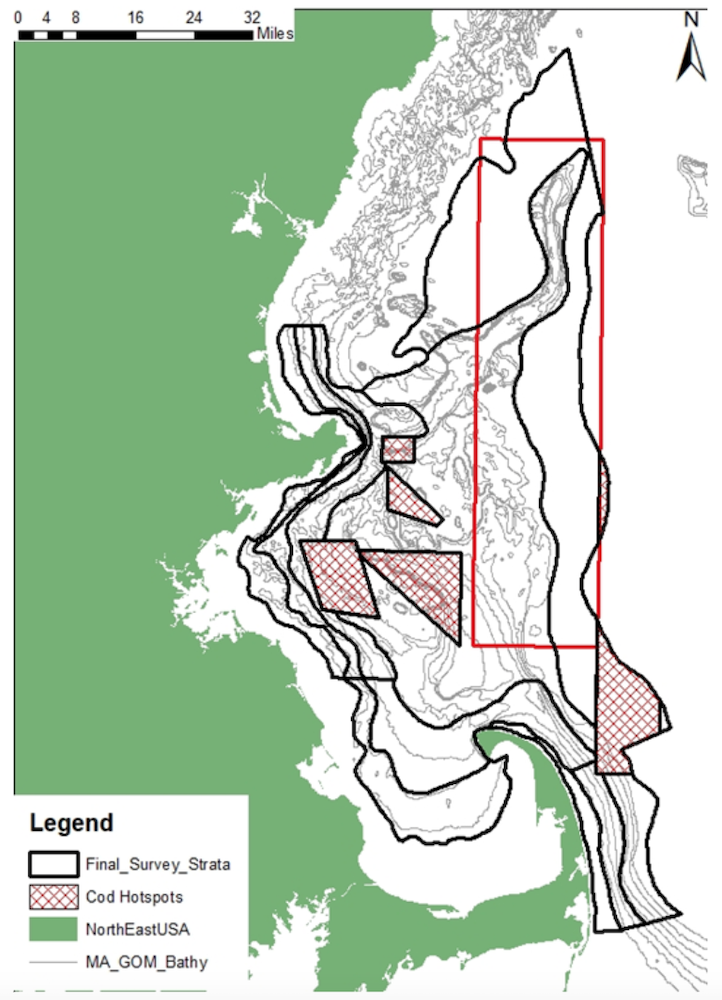
The fisheries independent survey used in all the groundfish assessments in the Northeast is the NEFSC bottom trawl survey, where random stations are surveyed every spring and fall using consistent methods. This survey creates what is called an index of abundance, where an indicator of stock size such as catch per tow is tracked through time.
To produce an index of abundance from the video trawl we would need to have a long time-series of consistent surveys. Since we don’t have many years of data to do this, we produce absolute estimates of abundance. Using sensors in the net, our speed, and the duration of a tow, we know the exact surface area of sea floor we cover. From the area we covered, and the cod catch, we can estimate a density of cod per square kilometer.
By extrapolating this density to the survey area, we can estimate the biomass of cod in that survey area. The problem with this method is that our estimates assume that all fish that were on the seafloor in front of our net were captured. We know this is not true, thus our estimates become extremely conservative.
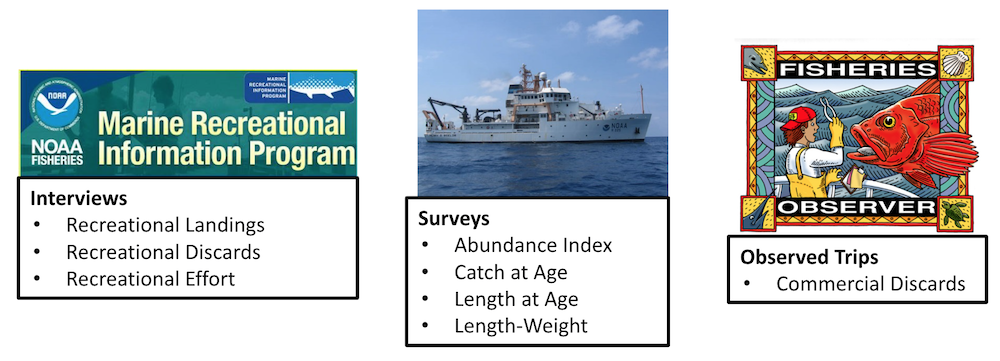
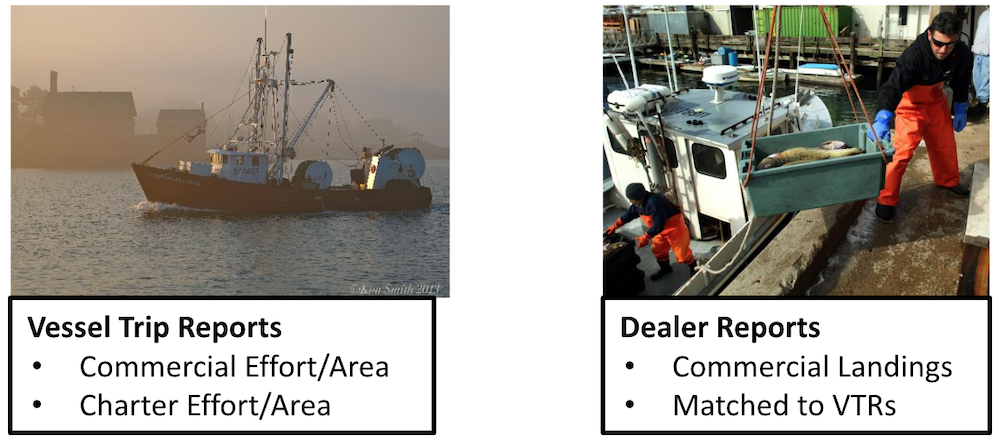
For my PhD dissertation I have been working on a way to estimate the percentage of cod in the patch of our net that are captured. This is called the efficiency of the net, and it can then be used to make more accurate estimates of cod population size. There are many ways in which a cod can escape the net before being captured.
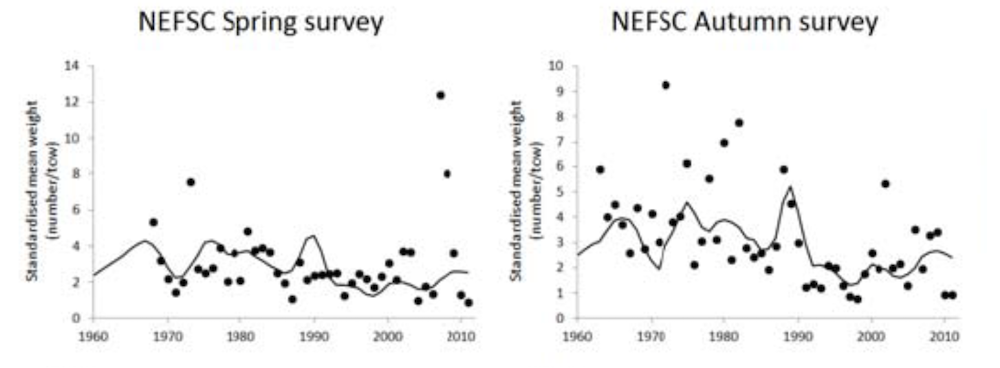
Instead of estimating all these methods of escape separately, we used a mark-recapture experiment to estimate the overall efficiency. In a mark-recapture experiment fish are tagged and released. We used passive integrated transponder (PIT) tags, which function like the chip in your credit card, and are read by a scanner built into the codend of the net.
Population size can then be calculated from the rate of recaptures. By comparing this estimate of population size to what we calculated from the survey we can then estimate our efficiency. We tested this system in January of this year and were able to tag over 1000 cod with eight recaptures. The data is still being analyzed but we hope to have an estimate of efficiency soon.
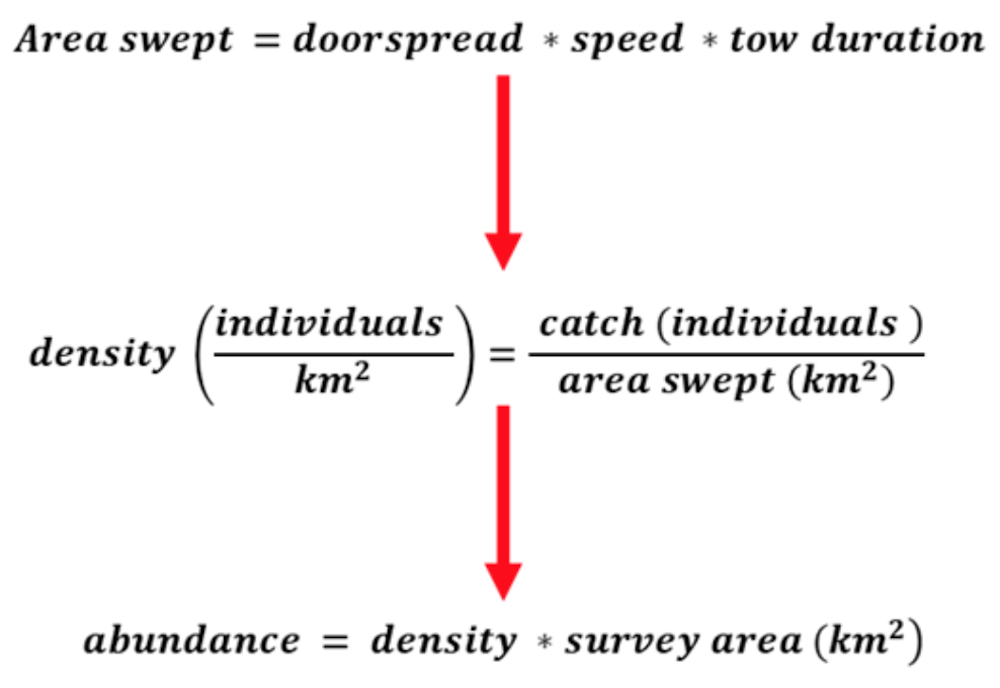
The goal of our work on Gulf of Maine cod has always been to collect the best and the most data we can to help better manage the stock. We have seen some promising results in recent years and with our improvements to the survey it is our hope that the data will be used in future assessments.
I am always happy to share the work we do with other fishermen and members here on My Fishing Cape Cod so feel free to reach out if you have questions or concerns. Hopefully some day soon we can be targeting Gulf of Maine cod once again.


Nick,
I was sent your paper by Ryan, with whom I was having a back-and-forth conversation regarding the state of our groundstocks in the Gulf of ME.. Seeing the drastic drop-off of Cod, Pollack Haddock, Flounder all of which were plentiful in my lifetime, but now are not, is a pretty distrubing trend and commentary on our greediness, and poor management of this fishery. Being a science guy all my life, I certainly understand how data, and it’s interpretation can drive faulty conclusions, when it isn’t statistically significant, or it’s interpretation is skewed. Its was quite encouraging for me see your work to establish sound data so better decisions can be made. I suppose we’ll never see Cod populations like in colornial times where the statement of “you can walk to England on the backs of Cod” was a common reflection of how many there used to be. But we need the data to stop over fishing, and insure there’s enough of the resource so that’s it healthily renewing, and enough for a healthy Gloucester fishing fleet, already significantly reduced. I believe the days of these giant “factory boats” is long over and they need to go into drydock, forever.
Thank you everyone, I’m glad I had the opportunity to share some of our work.
Super interesting stuff! Glad we have people like you working to preserve our resources! Thank you
Fascinating work Nick, thanks! I’m looking forward to reading more about your work in the future!
Thank You for your hard work!
This is great!